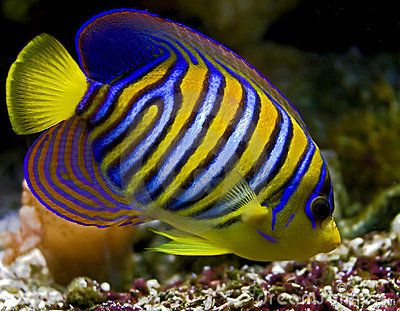How to care for Angelfish

Angelfish is a very popular tropical fish because of its unique shape and interesting personalities. Futhermore, Angelfish is a lot of grace and beauty to a tank.
Setting up an Angelfish tank
1. Size tank.
- You should select the proper size tank.
- Even if an angelfish is small now, but it wii grow. Angelfish can grow to be about 6 inches long and 8 inches tall. when selecting a tank, make sure it's at least 20 gallons in capacity. If you can afford a tank bigger than this, and fit it in your home, bigger is always perferred.
2. Maintain an appropriate pH level.
- You can measure the pH of your tank using a home testing kit, which you can purchase at most pet stores or online. You should wait 24 hours to test tap water, as the pH will change once it's been exposed to the air. Angelfish require a pH level between 6 and 8.
3. Add appropriate vegetation to the tank.
- Angelfish prefer a tank with a lot of substrate and vegetation. Decorate the tank appropriately to keep your angelfish happy.
4. Proper temperature.
- Angelfish thrive at a temperature between 75 and 84 degrees Fahrenheit (24 to 29 degrees Celsius). You will probably have to install a heating system to keep the tank at this level.
- You can buy a heating system online or at your local pet store. Follow the instructions to set up the system and make sure the water is at the appropriate temperature.
Feeding and caring for your Angelfish
1. Select the right foods
- Angelfish eat a diet primarily composed of meat products. Their main diet should be composed of cichlid flakes and pellets.
- However, supplement the diet with live foods. Angelfish may enjoy things like brine shrimp, white worms, bloodworms, meal worms, as well as small insects and crustaceans.
2. Observe your angelfish to determine how much to feed it.
- How much you feed your angelfish depends on a variety of factors, such as the fish's size or environment. You will have to observe your fish's eating habits and behaviors. There will be a trial and error period before you figure out precisely how much to feed your fish. You will also have to adjust feeding amounts as your fish grows.
3. Clean out the filter.
- You need to make sure your angelfish's tank is clean. Each week, detach and clean out the tank filter. This will keep the tank from becoming contaminated, preventing your fish from becoming infected or ill due to bacteria.
4. Change the tank water.
- At least once a month, you will have to replace the water. You do not need to replace all the water in the tank. Instead aim to replace around 10-25% of the tank's water each month.
Avoiding Problems with an angelfish.
1. Use caution when placing angelfish with other fish.
- Angelfish may not do well with other fish. They tend to be territorial, and may attack and even eat smaller fish. If you introduce other fish, stick to other angelfish or fish of a similar size.
2. Watch for signs of disease.
- If an angelfish becomes diseased, you will need to talk to a vet or a pet store worker about treating the illness. This is especially important if you have other fish in your tank. One sick fish could infect the tank.
3. Quarantine sick angelfish.
- If an angelfish is showing signs of disease, remove it immediately and place it in a quarantine tank.
- Seek the care of a veterinarian to discuss treatment options or ask at a local pet store.
- Do not put the fish back into the tank until the signs of disease have passed, as you do not want disease to spread.
*** Credit and Thank you www.wikihow.com ***

 View cart
View cart Checkout
Checkout

